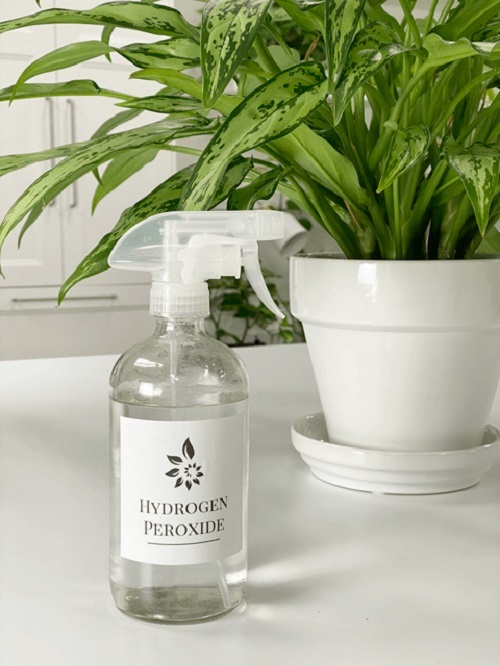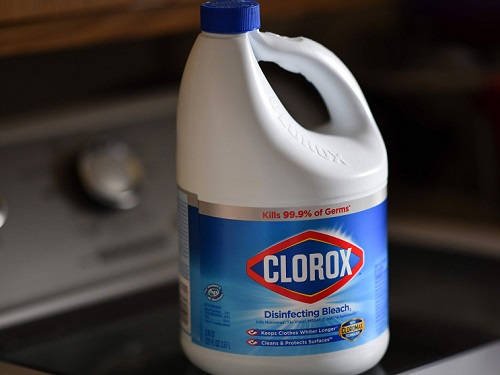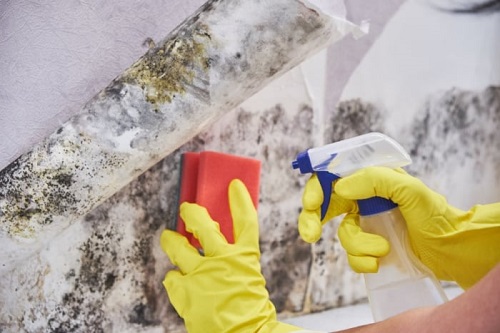Find out does hydrogen peroxide kill mold in this instructive article, along with some mold prevention tips and a couple of other natural remedies!
Are you experiencing that musty, earthy odour inside of your house? Then you’re facing a mold infestation. Molds are nanoscopic fungal species that come in purple, green, black, orange, and white. They need dampness, food, and optimum temperature to thrive. Molds flourish on moist wood, paper, carpet, food, and areas, having humidity levels of 50% or higher. While molds play a significant role in the ecosystem, it releases mold spore which is harmful to human health. That’s why it’s vital to eliminate them immediately.
What Is Hydrogen Peroxide?

Hydrogen peroxide is a clear, non-volatile liquid used in different cleaning and personal care products. It’s an excellent antimicrobial agent that eliminates harmful microorganisms such as yeast, fungi, mold spores, and bacteria. Furthermore, hydrogen peroxide is also used as a disinfectant on a number of kitchen surfaces.
Without any further ado, let’s find out whether does hydrogen peroxide kills mold or not.
Does Hydrogen Peroxide Kill Mold?
Yeah! Hydrogen peroxide kills mold on both penetrable and solid surfaces that include fabrics, wood, walls, carpet, shower, bathtub, basin, grout, caulking, upholstery, washer, and kitchen appliances. According to this research, hydrogen peroxide is a potent anti-fungal and anti-mold agent, which’s why it’s effective against molds.
The below method is suitable and entirely safe for both porous and non-porous surfaces.
What You’ll Need
- 3% Hydrogen Peroxide
- Water
- Empty Spray Bottle
- A Soft-bristled Brush
- Dry Cloth
Directions
- Fill two parts of 3% hydrogen peroxide and one part of water into an empty, clean spray bottle.
- Don’t forget to jiggle the bottle before using it everytime.
- Next, spray it on the mold-affected spots and leave it for 10-15 minutes.
- Once it’s done, scrub the surface with a soft-bristled brush momentarily.
- After that, wipe the surface with a dry cloth.
- Repeat the process if the results are not satisfactory.
Where Not to Use Hydrogen Peroxide to Kill Mold?
Hydrogen peroxide is mostly considered safe to use on all types of surfaces. However, avoid the application of undiluted hydrogen peroxide on coloured fabrics and wooden floors as it can bleach them. To avoid discolouration, test the hydrogen peroxide on an inconspicuous area of the mold-infested surface.
Other Natural Remedies to Get Rid of Mold

- Clorox – Thanks to its vital component’s fungicidal power, ‘Sodium hypochlorite,’ Clorox is an excellent product to eliminate mold. Read the step-by-step tutorial here.
- Try Oxiclean – Oxiclean eradicates mold and mildew from the hard surfaces and has the same effect on fabrics as well. Unlike other commercial bleaching products, OxiClean contains no harmful chemicals.
- White Vinegar – Owing to its mild acidic properties, white vinegar is an excellent remedy to eliminate mold from your property. Read details from here.
Precautions to Consider
Before using the above remedies, read the below precautions to avoid any mishaps.
- While trying the above hacks, wear hand gloves, a face mask, and full-sleeved clothes.
- Tell your children, pets, and elders to stay far away from the treated area.
- Maintain proper ventilation during the mold treatment.
How to Prevent Mold?
After eliminating mold from your house, do follow the below tips to prevent mold infestation in the first place.
- As mold thrives in moisture-prone areas, wipe liquid spillages immediately, and install dehumidifiers to control the indoor humidity levels between 30-50 percent.
- Repair leaking roof, water pipes, fire-protection sprinkler systems, windows, and wall leakages to prevent the infestation of mold.
- To improve ventilation, introduce exhaust fans in the kitchen, laundry rooms, bathroom, and basement.
- After every bath, wipe your bathroom walls and floor properly.
- Fix the damaged roof gutters and clean them regularly.
- Moist soil of the houseplants is the ideal breeding habitat for mold, which eventually spreads to other parts of the house. Get rid of this problem with these helpful tips.
- Don’t use carpet in your bathroom, kitchen, and basement floors to avoid mold growth.
When to Call a Professional for Help?
After using the hydrogen peroxide and other hacks, if the mold is still there, call a professional for further assistance. If molds develop inside the air conditioners, heating, or ventilation systems, taking help from a professional is the last resort. It’s highly recommended to avoid mold clean-up for people having allergic reactions to mold spores.
Final Thoughts
By trying hydrogen peroxide and the other mentioned remedies, mold will not be a problem for you anymore. However, if you’re facing a severe infestation, avoid the above remedies and call a professional for help. Besides, check out this article to know the many different uses of hydrogen peroxide.

